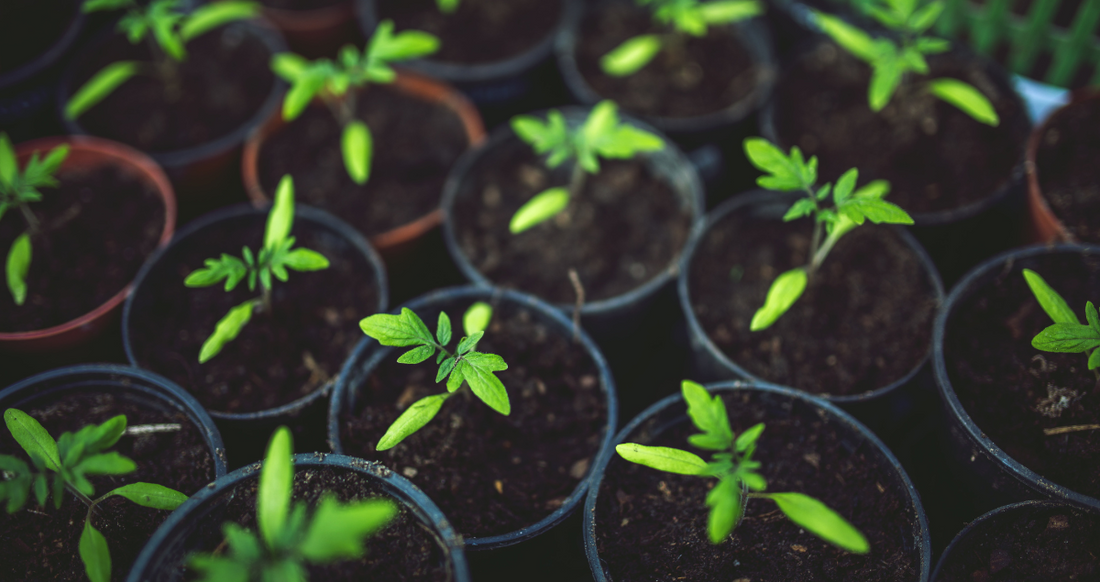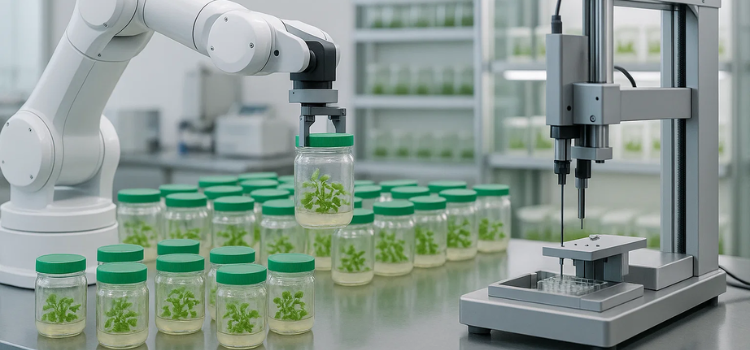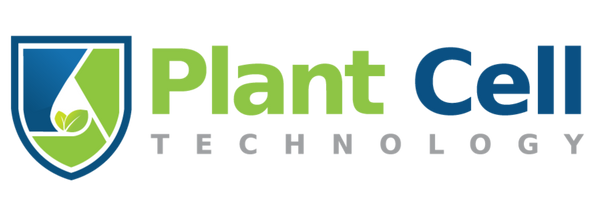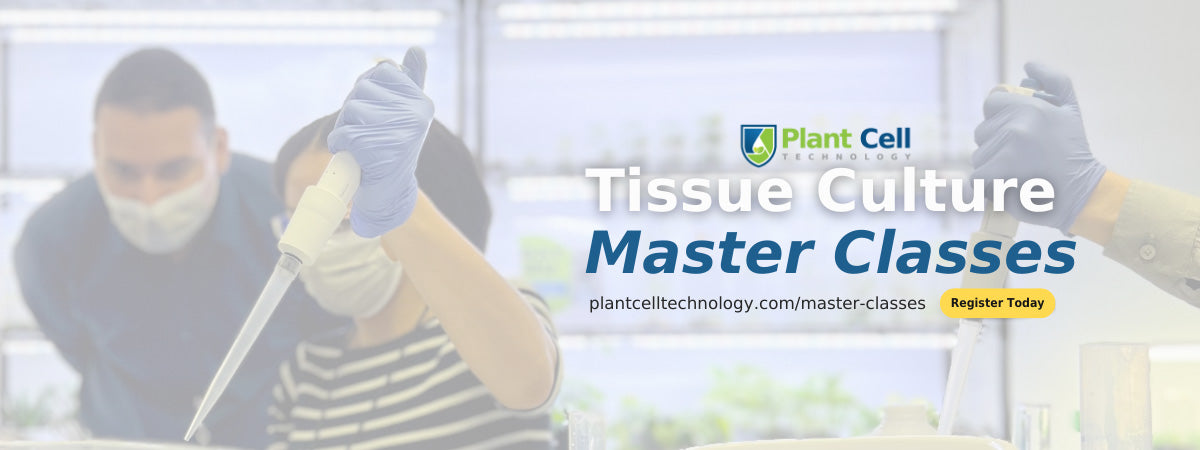
For Beginners: Tips To Properly Acclimate Tissue Culture Plants
As a content and community manager, I leverage my expertise in plant biotechnology, passion for tissue culture, and writing skills to create compelling articles, simplifying intricate scientific concepts, and address your inquiries. As a dedicated science communicator, I strive to spark curiosity and foster a love for science in my audience.


- For Beginners: Tips To Properly Acclimate Tissue Culture Plants
- What is Acclimation in Plant Tissue Culture?
- Why is Acclimation Necessary?
- Factors That Affect Acclimation of Tissue Culture Plants
- Best Tips To Acclimate Your Tissue Culture Plants
- Want To Learn How To Best Acclimate Your Tissue Culture Plants?
- Join Us in The Comprehensive Tissue Culture Master Class that You Can Ever Attend
What is Acclimation in Plant Tissue Culture?
Acclimation is defined as adapting your tissue culture plantlets to a greenhouse environment and preparing them for natural outside conditions.
As you know tissue culture plants are grown in a test tube or vessels in a completely controlled disease-free environment. Therefore, the chances of their survival in a highly fluctuating outside environment are reduced. Further, when they are transferred to soil, they become highly sensitive to diverse microbial attacks. This reduces the output or overall healthy plants you receive at the end of the process.
Thus, to increase the yield and survival of plants it’s necessary to properly harden the plants and slowly prepare them for what they will have to face after being transferred to natural conditions.
The ability to transfer tissue-cultured plants from a controlled, sterile environment to the field with minimal cost and a high survival rate is crucial for the commercial success of such plants.
In this article, we discuss more of the tips for acclimating your tissue culture plants properly and the factors that can affect the acclimation process.

Why is Acclimation Necessary?
Here are some reasons why acclimating tissue culture plants is necessary:
- Tissue culture plants are grown in a sterile and controlled environment, so they lack the natural resistance to environmental stressors and pathogens that plants grown in soil have.
- Tissue culture plants are often grown in a nutrient-rich gel-like medium, so they may not be used to soil conditions.
- Acclimation helps plants to adjust to the external environment, including light levels, temperature, humidity, and wind, which can affect their growth and survival.
- Acclimation can help tissue culture plants develop stronger roots, stems, and leaves, which will improve their ability to absorb nutrients and water from the soil.
- Proper acclimation can help tissue culture plants survive the transfer from the lab to the field or greenhouse, and improve their chances of long-term survival and growth.

Factors That Affect Acclimation of Tissue Culture Plants
Factors that affect the acclimation of tissue culture plants include:
- Humidity levels: Tissue culture plants are accustomed to high humidity levels, so when transferring to a greenhouse or field environment, it's important to gradually reduce humidity levels to prevent water loss and stress on the plant.
- Light intensity: Tissue culture plants require low light intensity, so exposing them to high-intensity light in a greenhouse or field environment can cause stress and damage to the plant. Gradual exposure to increasing light intensity can help the plant acclimate.
- Temperature: Tissue culture plants are often grown in controlled, aseptic environments with consistent temperatures. When transferring to a greenhouse or field environment, temperature fluctuations can cause stress and affect plant growth and survival.
- Nutrient availability: Tissue culture plants are often grown in nutrient-rich media, so when transferring to soil or potting mix, it's important to ensure the plant has adequate nutrient availability to support growth and acclimation.
- Plant variety: Different plant varieties have varying growth requirements, so the acclimation process may need to be customized based on the specific plant variety.

Best Tips To Acclimate Your Tissue Culture Plants
Here’re some tips to properly acclimate your plants:
- To acclimate tissue culture plants, they need to be transferred from a lab environment to a greenhouse with similar conditions.
- Plantlets should be transplanted into a potting mix with an inorganic nutrient solution, such as peat, vermiculite, soil, or sand.
- For a few days, the culture vessels can be kept in the greenhouse with loose lids.
- Shade should be provided for 3-6 days under diffused natural light to help the plantlets adapt to their new environment.
- Gradual exposure to greenhouse and field conditions is recommended in 2-3 phases.
- To adapt plants from high to low humidity, keep them in the shade with loose plugs for a week or two and then transfer them to pots with sterile soil and sand, covered with polybags.
- Preconditioning rooted plantlets in sucrose solutions (20-30g/L) before transferring them to a potting mix can increase shoot growth.
- Adding anti-transpirants like 'paclobutrazol' to the rooting medium can improve stomata functioning, thicken roots, and reduce wilting.
- The acclimation process needs to be customized for each plant variety based on its specific growth requirements.
The steps will prepare the tissue culture plants to initiate photosynthetic activity and prepare them to survive in the natural environment.

Want To Learn How To Best Acclimate Your Tissue Culture Plants?
Join Us in The Comprehensive Tissue Culture Master Class that You Can Ever Attend
We’re offering tissue culturists, growers, and plant enthusiasts a comprehensive tissue culture master class that give them proper training to start into tissue culture.
Here’re the benefits that you might enjoy after taking this class:
- Learning about the basics of tissue culture and understanding all terminologies in a practical way so you remember them all.
- Introduction to all equipment used in tissue culture, how they work, and how you can use them.
- Learning about building a home-based or commercial-scale tissue culture lab on a low to high budget.
- Creating a protocol or resources to search for them.
- Media preparation includes the order of adding individual components, adjusting pH, and autoclaving.
- Learning about the technique of obtaining explants from the mother source and surface sterilizing of explants.
- General practices to follow to provide complete aseptic conditions for protecting your plants against all kinds of contamination.
- Get a working protocol for the plant you attend the master class.
- Get all your tissue culture questions from an expert.
- How to regenerate healthy shoots and roots of your plants.
- Tips and process of best acclimating a plant.
- Network with like-minded tissue culturists.
And, there’s much more!!
Our master classes are basically a package to prepare and train you to instantly get started in the process by delivering you exactly what you need.
So, level up your tissue culture game by signing up for the masterclass TODAY!
P.S. At the same link you’ll also find the details of our upcoming master classes.
Blog Categories
View by Level
Popular Blogs

The Future of Plant Tissue Culture: Inside the Rise of Automation and Robotics
Introduction The integration of automation, robotics, and the analytical power of artificial intelligence (AI) is set to revolutionize plant tissue...
Read More
The Potential of Micropropagation in Cut Flower Production
Introduction The global cut flower industry is a vibrant tapestry of colors and fragrances, caters to a diverse range of...
Read MoreSubscribe to Our Newsletter








Join the conversation
Your email address will not be published. Required fields are marked